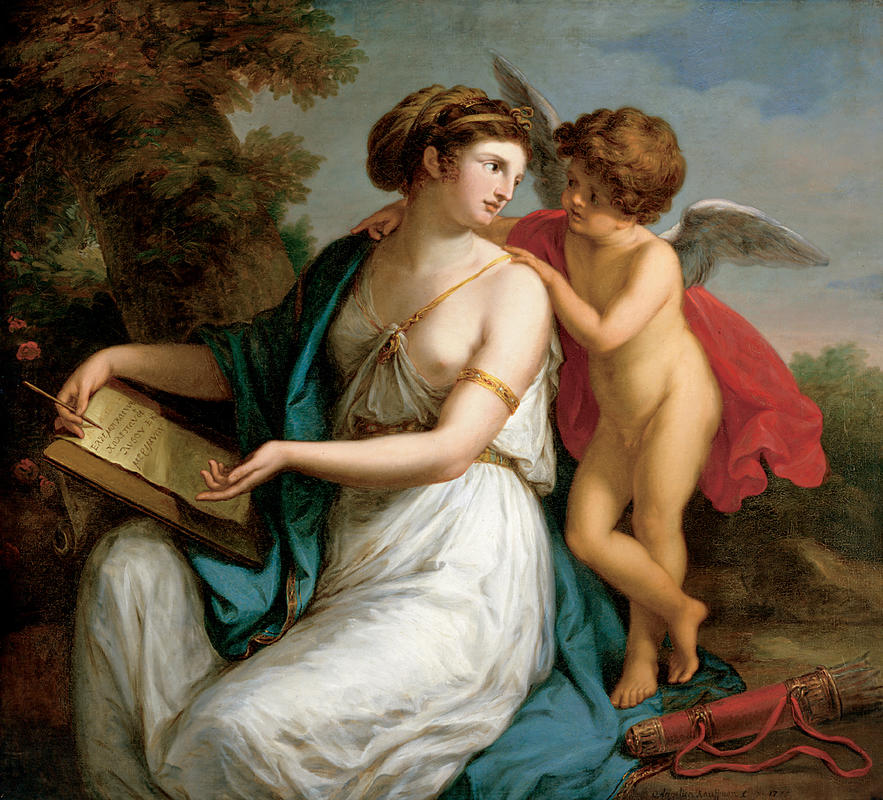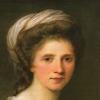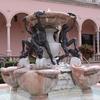In Angelica Kauffmann's Sappho Inspired by Love, our main character needs a little help from Cupid.
And it never hurts to go that extra mile by slipping a nip. The Swiss artist Angelica Kauffmann depicts Sappho collaborating with Cupid on one of her well known verses. Famous for her lyric poetry and supposed lust for the ladies, Sappho was a popular figure in ancient Greece and during the Neoclassical art movement in Europe. In fact, the words “sapphic” and “lesbian” derive from the poet’s name and homeland, Lesbos, due to her rumored preference for women.
Tragically, nearly all of Sappho’s poetry has been lost, destroyed, or only exists on fragments of papyrus. But that doesn’t stop her from being the subject of Kauffmann’s painting. While most 18th century female artists specialized in portraiture or still life, Kauffmann embarked on an independent career as a history painter, choosing her subjects from classical antiquity. She was also one of the two female founding members of the London Royal Academy. Despite this prestige, as a woman Kauffmann wasn’t permitted to paint from live nude models like her male counterparts, so her figures were instead inspired by ancient sculpture.
When this painting was bought in 1928 by John Ringling, of Ringling Brothers Circus fame, its title was Lady as Venus with Cupid by her Side. Upon closer inspection, the Greek words on the female figure’s page translate to one of Sappho’s only surviving poems, Ode to Aphrodite. The poem in the painting reads,
“ So come again and deliver me
from intolerable pain.”
With this identity crisis resolved, the painting’s true meaning can be deciphered. In the poem, the Sappho calls on Aphrodite, goddess of love, to help her in pursuit of her crush. As Aphrodite’s son and fellow god of love, Cupid acts as a wingman (pun definitely intended) in Sappho's quest for love.















This is a fantastic example of a neoclassical painting by Angelica Kauffmann. This is a fantastic example of a neoclassical painting because of how the woman (Sappho) is dressed as well as Cupid by her side. Sappho is dressed in Ancient Greek/Roman clothing and Cupid by her side is the god of love in Rome. Personally, the way Sappho is gesturing to her paper and seeming to look to Cupid for approval gives the painting a sense of realism and life to me.